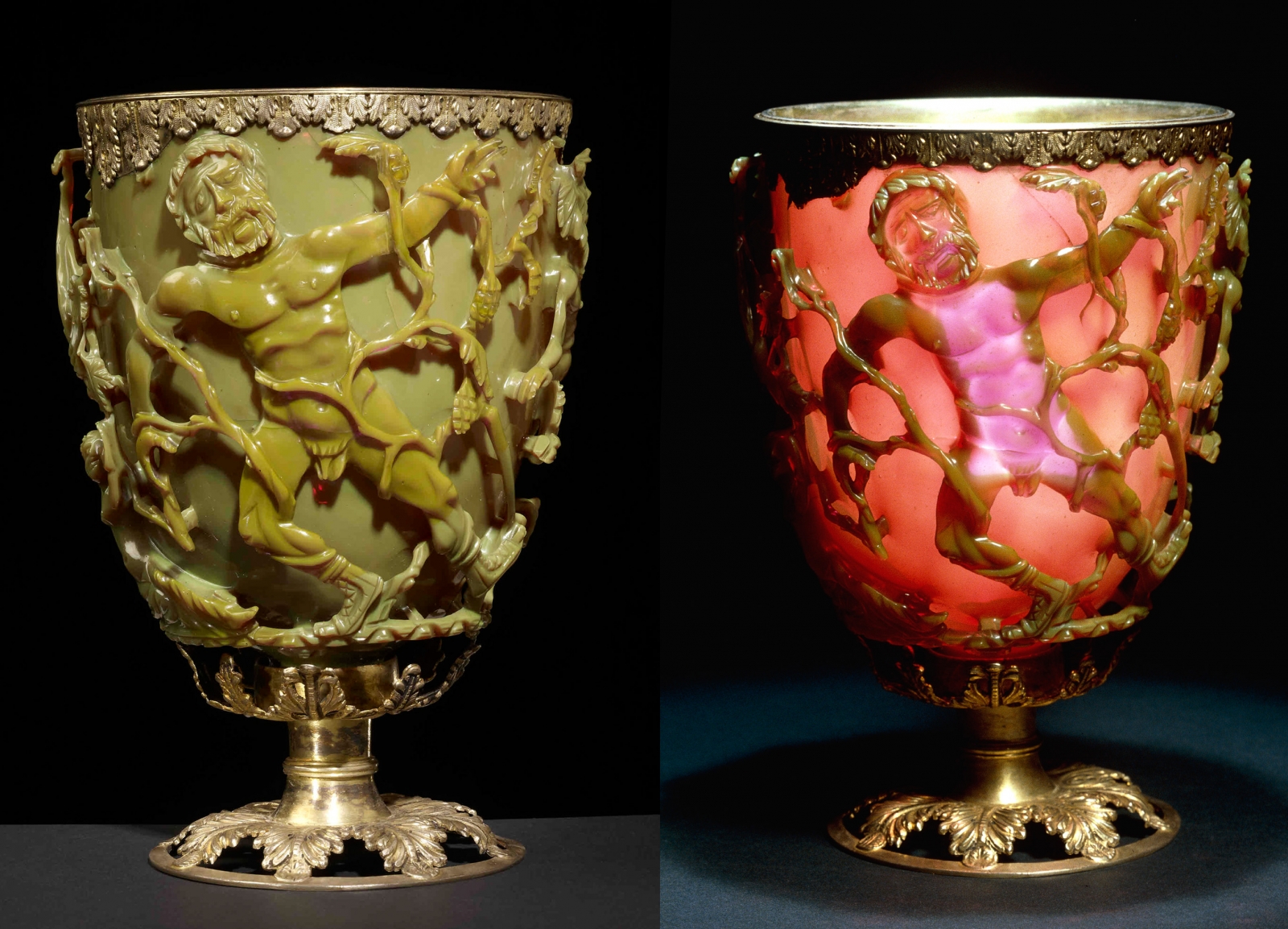In this week’s lecture, Dr. Gimzewski, a nanoscientist and a
professor who works in California Nano Systems Institute and has about 35 years
of experience in nanotechnology, gave us a lesson about nanotechnology. First,
nanotechnology is the technology that deals with nano scale, which means
nanotechnology deals with stuff that are extremely small. Dr. Gimzewski said almost
every aspect of science and technology is impacted by nanotechnology and there
are so many other fields, such as art, that are also influenced by nanotechnology.
One of examples Dr.Gimzewski presented us in which
nanotechnology is used in art works is Lycurgus Cup which is currently in the
British Museum. This cup is assumed to be present from around 400 B.C. In the
daylight, the cup appears to be in green. However, when the light is
illuminated from the inside, the cup appears to be in red. This difference in
color is caused by the nano sized gold particles. Back in time, Romans found a
way to use nano sized gold particles in the cup and this led to changes in the
color of cup depending on where the light is coming from. This example was very
interesting to look at and read about, because I thought nanotechnology does
not have a long history and this cup contradicted my belief. Romans used nanotechnology about 1600 years ago, which is so surprising to me.
 |
| Lycurgus Cup |
I also did some research to look up some other examples in
which nanotechnology and art intersect with each other. Then, I came across
with this article or blog, “When Nanotechnology Meets Art.” So, butterflies are
one of the insects that are known to human for having very beautiful patterns
on their wings. Those patterns are beautiful on bare eyes, but in the post, the
author talks about how the microscope, an example of nanotechnology, reveals
the patterns that are hidden and patterns in more detail. What author did was
provide readers with photos, but I still think some of the photos he provided
is a piece of art that uses nanotechnology, because with the help of
microscope, readers were able to look at the wings of butterflies in detail.
The wings really have a beautiful pattern or design with colors that are nicely
matching with each other and appealing to human eyes.


I liked reading about this
post, because I am a person who really hates insects and who is really afraid
of even looking at the insects. However, by looking at the images of insects using nanotechnology, now I can appreciate the beauty that some insects have. Also, it is so amazing how colors and designs are always so harmonious and beautiful in wings when these patterns are naturally shaped on insects wings.

Resources:
Gimzewski, James. “Nanotech Jim pt3” YouTube. YouTube, 21 May 2012. Web. 28 May 2017. <https://www.youtube.com/watch?v=X0HCNiU_108>
Gimzewski, James. “Nanotech Jim pt1” YouTube. YouTube, 21 May 2012. Web. 28 May 2017. <https://www.youtube.com/watch?v=q7jM6-iqzzE>
Risk Bites. "What is nanotechnology?" YouTube. YouTube, 18 Jul 2016. Web. 28 May 2017. <https://www.youtube.com/watch?v=DAOFpgocfrg>
Russon, Mary-Ann. "Romans used Nanotechnology to Turn Lycurgus Cup From Green to Red 1,600 Years Ago." International Business Times. IBTimes Co., Ltd, 6 Oct 2014. Web. 28 May 2017. <http://www.ibtimes.co.uk/romans-used-nanotechnology-turn-lycurgus-cup-green-red-1600-years-ago-1468746>
"When Nanotechnology Meets Art." ScienceAndReligion.com. n.p., 20 Apr 2011. Web. 28 May 2017. <https://iaincarstairs.wordpress.com/2011/04/20/when-nanotechnology-meets-art/>
I enjoyed reading your blog. I thought the Lycurgus Cup was interesting too. I'm interested in how the gold particles were manufactured. As you pointed out, this piece was created thousands of years ago before modern technology. Nonetheless, I think it's fascinating
ReplyDelete